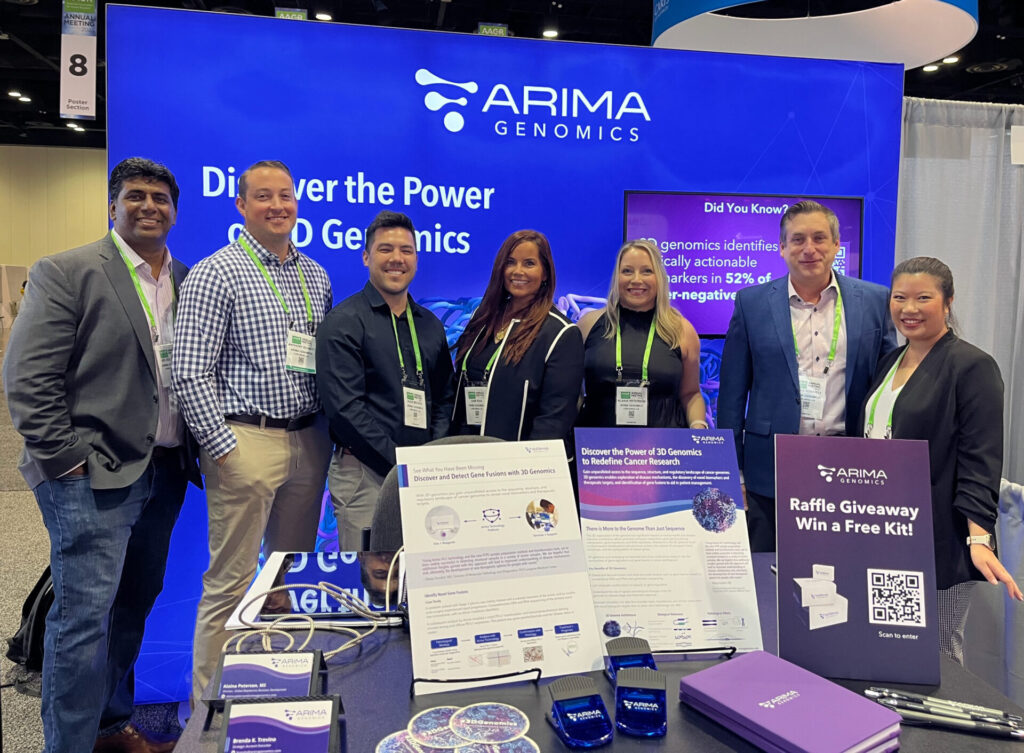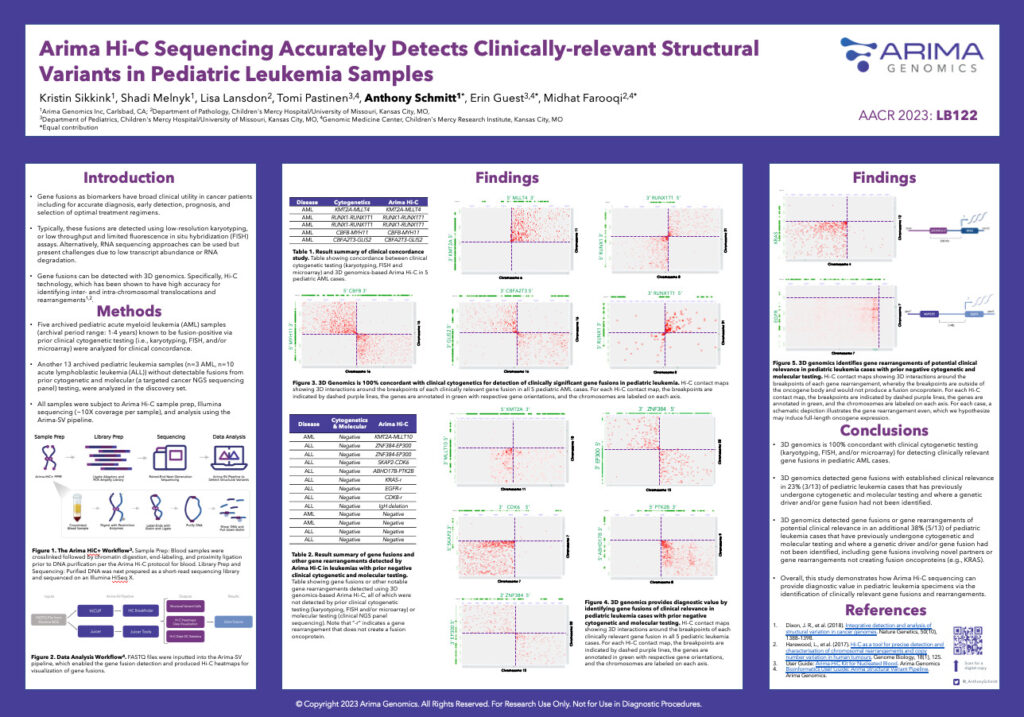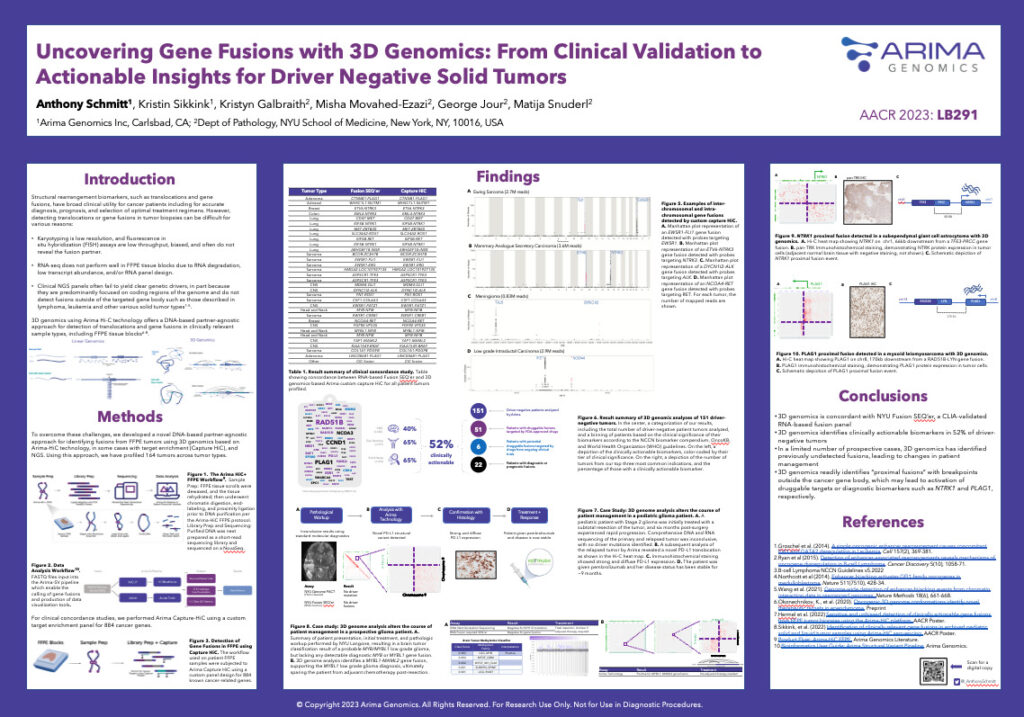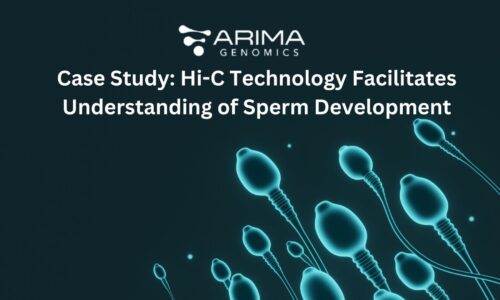April 21, 2023
Share
The Arima Genomics team was on-site in Orlando, Florida, this week, soaking up the science, sun, and sparks of inspiration at the American Association for Cancer Research (AACR) annual meeting. We were in awe of the immense progress being made across the field, from understanding the mechanisms of cancers to the best clinical approaches for improving the lives of those affected by cancer. Additionally, it was exciting to see how many fields of science are active in providing information to scientists, clinicians, and patients to act on, including bioinformatics, chemistry, translational science, multi-omics, radiology, and so much more.
We were honored to participate in this event and share how 3D genomics can provide novel insights to support cancer researchers as they strive to better understand and treat cancers.
Exhibit Highlights
At our booth, we showcased the benefits of 3D genomics in helping researchers gain unparalleled access to the sequence, structure, and regulatory landscape of cancer genomes. It was exciting to talk to long-time customers as well as those brand new to the field of 3D genomics.

The Arima Genomics team at AACR 2023 in Orlando, Florida.
So, why might cancer researchers want to incorporate 3D genomics into their science?
- Detect and discover known and novel structural variants, such as gene fusions missed by conventional DNA and RNA next-generation sequencing
- Link chromatin conformation to impacts on gene regulation
- Understand the role of spatial and temporal changes in the 3D genome on disease stage and treatment response
- Generate incredibly rich data that provides basic, translational, and clinical researchers with novel biological insights that no other omic technology can offer
Spotlight Theater
Arima hosted a spotlight theater event for the second year at AACR. The event was very well-attended, drawing an engaged audience of scientists and clinicians interested in the latest advancements in 3D genomics.

Ilaria Iacobucci, PhD, of St. Jude Children’s Research Hospital, presents her research at Arima’s spotlight theater at AACR.
Anthony Schmitt, PhD, Senior Vice President of Science at Arima Genomics, kicked off the session by showcasing compelling examples of how integrating 3D genomics into multi-omic approaches has revealed genetic drivers of previously driver-negative tumors, presenting exciting opportunities in cancer research and beyond.
Anthony was joined by Arima customer, Ilaria Iacobucci, PhD, of St. Jude Children’s Research Hospital, who shared her expertise in utilizing 3D genomic techniques to understand the role of alterations in chromatin conformation in the pathogenesis of high-risk myeloid and lymphoid leukemia.
Poster Presentations
The Arima team had two late-breaking posters accepted at AACR in which they shared recent work stemming from collaborations with clinicians at NYU Langone Health and Children’s Mercy Hospital.
Uncovering Gene Fusions with 3D Genomics: From Clinical Validation to Actionable Insights for Driver Negative Solid Tumors
Key Takeaways:
- 3D genomics is concordant with NYU Fusion SEQ’er, a CLIA-validated RNA-based fusion panel.
- 3D genomics identifies clinically actionable biomarkers in 52% of driver-negative tumors.
- In addition, in a limited number of prospective cases, 3D genomics has identified previously undetected fusions, leading to changes in patient management.
- 3D genomics readily identifies “proximal fusions” with breakpoints outside the cancer gene body, which may activate druggable targets or diagnostic biomarkers such as NTRK1 and PLAG1, respectively.
Arima Hi-C Sequencing Accurately Detects Clinically-relevant Structural Variants in Pediatric Leukemia Samples
Key Takeaways:

Poster presented by Arima scientists at AACR.
- 3D genomics is 100% concordant with clinical cytogenetic testing for detecting gene fusions in pediatric AML cases.
- 3D genomics detected clinically relevant gene fusions in 23% (3/13) of pediatric leukemia cases previously tested negative for genetic drivers.
- 3D genomics detected gene fusions or rearrangements of potential clinical relevance in 38% (5/13) of pediatric leukemia cases with no identified genetic drivers, including novel partners or non-fusion rearrangements (e.g., KRAS).
- This study demonstrates the diagnostic value of Arima Hi-C sequencing in identifying clinically relevant gene fusions and rearrangements in pediatric leukemia specimens.
Connecting with so many scientists and clinicians at the forefront of cancer research was fantastic. We look forward to many more years of attending and participating in this outstanding conference.
Learn more about how cancer researchers use Arima technology to advance their discoveries with 3D cancer genomics.




